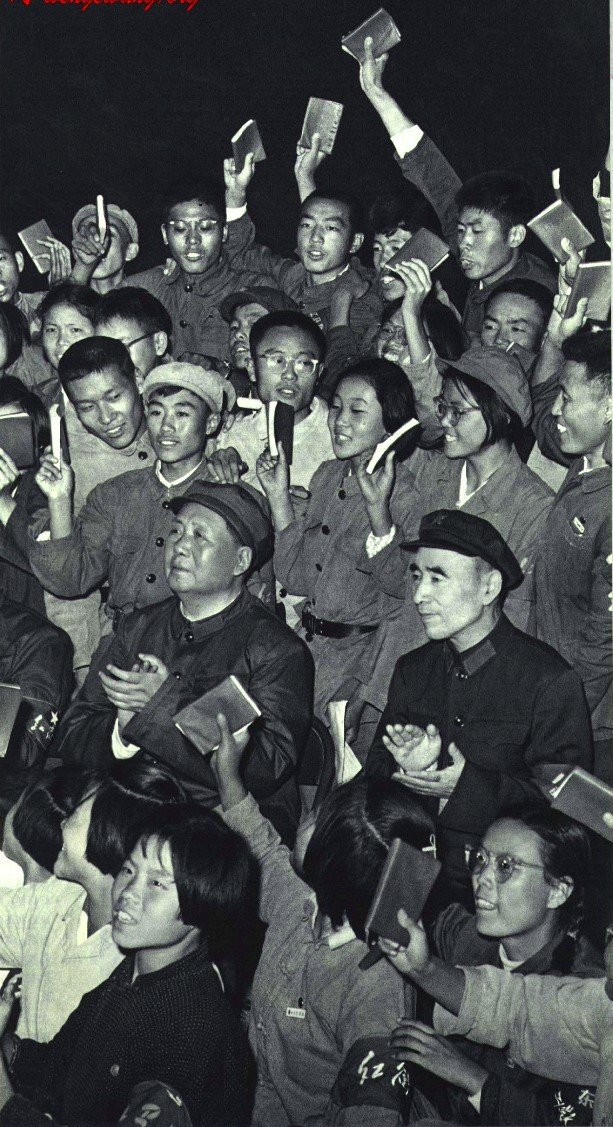#82 China’s Economic Transformation and Mao Zedong
Mao Zedong in 1959
Mao’s regime was in office from 1949 to 1978. During these 29 years, China was moved from one of the poorest nations on earth into the start of an industrial revolution. Mao’s heritage to the Chinese people is therefore in taking China out of disaster left by the old regime in 1911, thus winning the peace in 1949; then starting China’s industrial revolution.
It is worth taking a short pause to consider the huge difficulties many people face before they can begin to industrialise their economy. In particular, how large surplus resources are needed and then channelled into new industrial development.
Readers of this blog will recognise the concept of ‘transformation’: the need to find scarce resources, to provide long term capital to invest in the factories and machinery that lead to continuous and long-term growth, urbanisation, and growing wages. In brief the movement from the rural and agriculture to the urban and higher standards of living.
The key to national transformation in a single territory is that scarce resources are transferred, made in one sphere of economic activity to another. The British, the French and the USA did this through slavery. The Germans did this through their banks in the 2nd half of the 19th century. The Chinese transformed their economy under Mao. This is the story I will tell now.
Mao Zedong’s Heritage to the Chinese People
Mao knew about the English agricultural revolution in the 16th and 17th centuries, and he knew about the industrial revolution in the 18th century too. He was aware of the need to transform China.
Mao’s heritage has caused huge debate and disagreement, particularly across Western intelligentsia. Mao made serious mistakes at the end of his life. By the 1960s, he was in a hurry. He also wished to show the Soviet Union that China was independent of their advice.
Mao created the Hundred Flowers Campaign; the Great leap Forward; and the Peoples Commune. All these vast initiatives came under the rubric of the Cultural Revolution. Mao used the armed forces and the young new generation (the Red Guards) to carry through his reforms. The Cultural Revolution was supposed to bring China into the industrial age within a very few years. It failed badly and was not helped by famine conditions in 1960-61, and many peoples lost their lives.





If Mao’s heritage to China had solely been the Cultural revolution, the judgement from so many Western writers might make sense. Mao was the leading figure in China from the depth of chaos and humiliation to the start of where China is today. A young man in 1921 at the start of the China Communist Party to his death in 1978. To this writer, Mao is one of the extraordinary men of history.
Despite the chaos of the Cultural Revolution, Mao still managed to lead China through the most difficult transformative stage of economic development.
China’s Transformation: The Necessary Conditions
In addition to the Cultural Revolution, Mao’s heritage also includes the following:
During Mao’s entire tenure, the US imposed punitive embargoes on food and agricultural equipment.
His period of office saw the end of hyperinflation and he freed China of foreign debt and rampant corruption.
Vast irrigation works and flood control projects were put into place.
He banished warlords and bandits.
Eliminated serious crime and drug addiction.
The population doubled and people’s life expectancy in China started their upward trend.
Literacy rates increased to 85% of the population.
Women were liberated from many crushing inequalities.
The economy began its rapid upward path.
He liberated the countryside and collectivised farming.
In short, Mao’s regime created the conditions for China’s industrial revolution. By 1974, China was producing jet aircraft, locomotives, ocean-going ships, hydrogen bombs and much more. This transformation is monumental if readers recall where China was just 25 years earlier.
During this period, China’s national income grew by just under 500%. This was significantly faster than her population growth. Mao Zedong was one of the founders of the Chinese Communist Party in a land of 400 million people. Alongside a wide range of his colleagues, they reshaped China’s history. Despite his late in life failure, his legacy to the Chinese people is very widely recognised today.
Many Western ideologues have failed to recognise these quite extraordinary achievements. Mao’s regime created the conditions for China’s industrial transformation which followed Mao’s death. The regime had inherited a nation on its knees and in just under 25 years had turned the society and its people towards an industrial future.
Copyright Notice. This blog is published under the Creative Commons licence. If anyone wishes to use any of the writing for scholarly or educational purposes they may do so as long as they correctly attribute the author and the blog. If anyone wishes to use the material for commercial purpose of any kind, permission must be granted from the author.




The peoples of Western Europe had risen from one world of relative poverty and had learnt how to take the wealth from the Americas and transfer it to their own countries. This was slavery and latterly until 1920, indentureship. A whole set up of banks, shipping companies, and insurance companies had arisen to make these transfers possible. From the 1750s the European invaders turned their attention to Asia and systematically began the colonisation process anew. At the same time, as they attempted to colonise and extract the wealth of Asia, the colonising countries began the process we now recognise as industrialisation alongside the rapid growth of cities. The surplus resources extracted through colonisation were used to finance the growth of new industries.